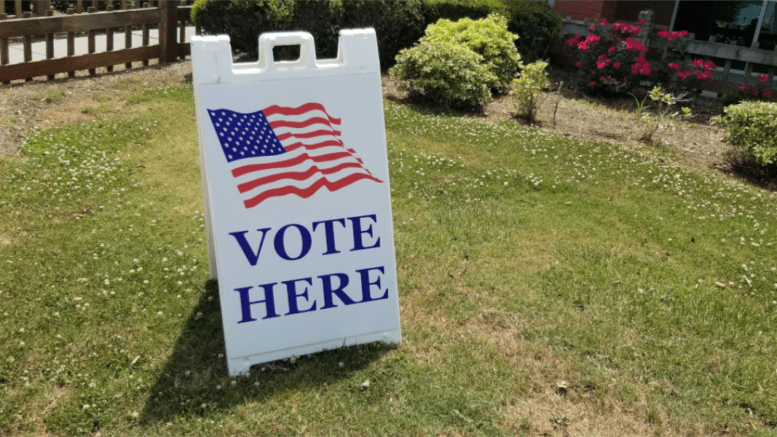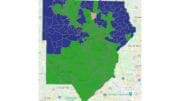By John A. Tures, Professor of Political Science, LaGrange College
A research project with my undergraduates led me to find evidence of Cobb County and other Atlanta suburbs flipping from red to blue, and it’s more than just demographics driving the party shift. But as the song “My Blue Heaven” implies, there’s also a “turn to the right” which can’t be ignored in the year 2024.
In a study controlling for politics in the Peach State, we began looking at trends over the past three elections, with a big finding outside of Atlanta. And it starts with Cobb County.
Most Americans know, thanks to the 2020 Election and Trump’s alleged attempts to change the result, how Georgia voted in the last presidential contest. But not all may know the key for the Democratic victory occurred in an area we once thought of as Newt Gingrich’s backyard, held later by Johnny Isakson when he was in the House of Representatives.
When Obama sought reelection in 2012, Romney won Cobb County 55.4% against 42.9%. Hillary Clinton won the county by about two percentage points four years later. But in 2020, Biden took Cobb County, facing Trump, by a 56.3%-42% margin, according to Ballotpedia.
For those who focus on racial demographics, you might be fascinated to learn that the percentage of whites in Cobb County (58.6%) is exactly the same as the percentage of whites in Georgia. African-Americans make up a smaller percentage than the Georgia average (27.6% vs. 31.6%), though there’s a higher percentage of Hispanics (13% to 9.5% statewide) and Asian-Americans (5.4% to 4.4%) in Cobb County. The trends are more pronounced in education between Cobb County and Georgia, in high school graduation rates (92.1% vs. 87.1%), college graduation rates (nearly half of Cobb residents in the survey, versus 31.3% in Georgia). In addition, Cobb County boasts higher income levels ($77,932 to $58,700) and lower poverty rates (9.1% vs. 15.1%) than the Georgia mean. Those numbers come from the American Community Survey of the U.S. Census Bureau.
It’s a similar story in Gwinnett County, where Democrats went from taking 44.7% of the vote in 2012, while Biden captured the county by a 58.4% to 40.2% decisive advantage. Likewise, Henry County trended blue as well, going from 47.9% to 59.7% Democratic from 2012 to 2020. In all three cases, the biggest jumps were from 2016 to 2020, a troubling trend for the GOP.
Moreover, other blue counties around Atlanta became even bluer, from Douglas and Fulton and Clayton to DeKalb and Rockdale. Even Newton County, whose support dipped from Obama to Clinton, rebounded solidly for Biden. It’s a similar story for counties housing other fair-sized Georgia cities like Columbus, Augusta, Athens and Savannah.
In the lyrics for the song “My Blue Heaven,” it references a “turn to the right.” That was the case for the majority of the rural counties in Georgia. There were 122 Georgia counties coded “Solid Republican” by Ballotpedia, making up 45% of the state’s voters. Though only one county flipped from Democratic to Republican in 2020 (Burke), six made the shift in 2016 and retained the Republicans in 2020.
For the 27 Solid Democratic counties, they only make up a little more than a third of the state’s voters. That’s why Cobb County, in addition to Gwinnett and Henry, are key, as they make up close to 20 percent of the state’s voters. That’s where the balance of the power in the Peach State can be found, and will be the key next year in the presidential contest..
John A. Tures is a professor of political science at LaGrange College in LaGrange, Georgia. His views are his own. He can be reached at jtures@lagrange.edu. His Twitter account is JohnTures2.




